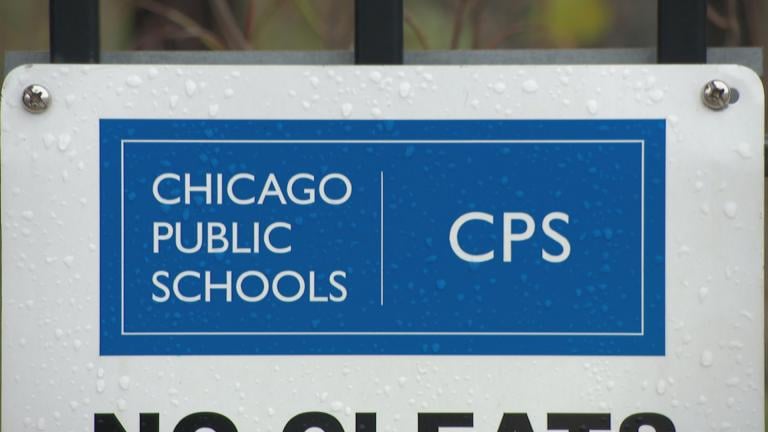With nearly as many bus driver vacancies (586) as drivers (714), Chicago Public Schools doesn’t have the capacity to transport all of the students eligible to ride a bus to school.
Companies have tried offering bonuses and pay bumps to address the shortage of drivers.
Now, the district is trying a different route: adding electric buses, which would be the first buses to be purchased and owned by the district rather than contracted vendors.
Chicago Public Schools was among 67 winners of the U.S. Environmental Protection Agency’s first Clean School Bus Program. CPS will receive more than $20 million to purchase 50 new “clean” school buses.
“In addition to raising driver wages, recruitment and hiring incentives, and adding more transportation companies, the City and District pursued this grant as another way of addressing student transportation challenges,” CPS said in a press release Monday.
Brenda Mallory, who chairs President Joe Biden’s Council on Environmental Quality, said the program is intended to create workforce development — though in an interview with WTTW News, she said she was not aware of Chicago’s driver shortage problems.
“One of the features that we think is great about this program is that it’s actually helping to create employment opportunities around the busing itself — on the maintenance of the busing, the driving of the busing,” Mallory said. “There’s a focus on employment as it relates to the availability of these buses and the infrastructure that’s going to be necessary for serving them.”
While the Chicago Transit Authority has electric buses as part of its fleet, there are currently no electric buses dedicated to picking up and dropping off CPS students.
Environmental advocates say transitioning away from diesel-powered buses is important, particularly for children, whose lungs aren’t fully developed.
“To be exposed to excess levels of air pollution on their way to and from school every day can impede their lung growth and exacerbate asthma,” Environmental Law & Policy Center policy advocate Susan Mudd said.
Mudd said there are community benefits, too.
“The communities through which these buses drive every day are impacting the quality of neighbors across Chicago and everywhere else,” Mudd said. “Diesel also contributes to climate change because of the black carbon that are emitted from those tailpipes.”
There won’t be enough electric buses to serve all of Chicago.
As part of its application, CPS said it and the Chicago Teachers Union ensured the buses “will serve students and communities located on the city’s South and West Side neighborhoods that are most impacted by poor environmental policies and practices, and historic disinvestment.”
Those targeted communities are: Pilsen, Little Village, McKinley Park, New City, Back of the Yards, North Lawndale, South Lawndale, Altgeld Gardens, East Side, Roseland and South Deering.
“They gave really high priority to low-income communities,” Mallory said of EPA grant reviewers.
An EPA spokesperson said copies of the grant applications are not available for public review, but will be once the money is actually awarded, likely in April.
Grantees will have at least two years to purchase the buses.
Two other Illinois entities also won grants: Peoria’s school system is set to get almost $6 million that will pay for 15 buses, and Van Pool Transportation LLC-Beacon Mobility, a company that operates bus services in the Chicago metropolitan area, was selected to receive $15.8 million to buy 40 buses.
Mudd said the “upfront cost can look scary.”
A diesel-powered school bus runs around $100,000, while it costs three times that for an electric bus, she said.
Tax credits can help to offset the cost.
Beyond the health perks, Mudd said there are lifetime savings, given that electricity is cheaper per mile and less volatile than the cost of fuel.
She also said electric bus maintenance costs will be lower.
“It still takes expertise (to repair and upkeep electric buses), but they are cheaper because of the many thousand fewer parts that need to be maintained,” Mudd said.
Critics challenge whether school districts and transportation companies have charging capabilities, and whether the electric grid can handle a massive, hurried push to rely more heavily on it, particularly as states like Illinois move away from coal generators.
“All of that kind of work is actually part of the analysis that EPA has been doing,” Mallory said, adding that a joint Department of Transportation and Department of Defense office is troubleshooting grid capacity issues.
Illinois law requires the state move toward 100% clean energy by 2050, while Chicago has a goal of reducing carbon emissions by 62% come 2040.
Mallory also said charging the buses should not present an issue.
“We’re working to make sure that the places where the funding is going to and where the buses are, are actually going to be able to service those buses,” Mallory said.
Mudd agreed.
“The grid can handle this,” she said, noting that the transition from standard school buses to the zero-emissions variety is gradual.
The White House grants, which were part of the 2021 bipartisan federal infrastructure law, will pay for 2,700 electric buses nationwide and 240 in Illinois — a small portion of the approximately 480,000 school buses in operation.
Electric school buses will look and feel traditional. But they won’t smell or sound it.
“They don’t make a lot of noise,” Mudd said, “and they don’t stink.”
Observers — and students — will likely only be able to tell the difference because school buses will have a marking highlighting an electric plug.
They’re also so quiet that manufacturers will outfit electric buses with a jingle or sound so that people know when one is approaching.
Note: This article was published Jan. 9, 2024, and updated with video Jan. 10, 2024.








